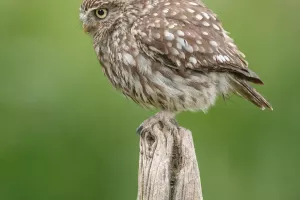The caracal is the heaviest and fastest "hunter" in the cat family in the animal kingdom. They have four small fangs aligned up and down, long blood-red tongues, and round blue-black eyes. Their front paws lie on the ground, and their slightly arched bodies seem to rush towards you at any time.
Caracals generally live in dry wilderness, mountains and even deserts, and areas with a lack of water resources do not affect the survival of caracal cats. They are very independent, and some form small families, occupy their own territory through urine as a marker, and live in peace with nature. Caracals are medium in size, and their fur color is also divided into dark red, gray or sand gray, but they are generally solid colors.
The most distinctive feature of caracal cats is the pair of long and thick black ears, which are still different from ordinary cats. Their ears are controlled by more than 20 muscles and are also called "black ears" in Türkiye. The role of black ears is not only a sign that distinguishes them from ordinary cats, but more importantly, caracal cats rely on these ears to find prey. The black ears are erected with antenna-like hairs that can tell the direction and magnitude of the wind to determine the location of their prey. Some people call them "radar ears", showing the importance of the role.
Caracals mainly feed on birds and small mammals such as hares, duikers, and young ostriches. Some domineering caracal cats can also snatch prey from jackals, and their ambitions are not as weak as domestic cats like to eat fish and play with mice. Not only that, after all, it is a cat family. Cats are naturally cold, and caracal cats naturally have this characteristic, such as picky eaters. Not all food gets into their mouths.
Caracals do not eat mammalian guts and hair. When they hunt for their favorite food, they will not hesitate to throw away their internal organs. To avoid gnawing on a mouthful of fur, they would rather rip off the skin of their prey than nibble on fresh meat.
Caracals are members of the Convention on International Trade in Endangered Species of Wild Fauna and Flora, and they live in Africa, West Asia, South Asia and other countries. Because of their strong ability to adapt to the environment, they have a strong endurance. In order to catch a bird on a tree, they can lurch around for a long time, and once they are sure of their position, they jump up and knock the bird down, open their big mouth, bite the neck of the bird with their fangs, and then feast on the bird.
If there is anything else caracal can do, see if they can catch flying birds. Due to their strong jumping ability, the height of full jump can reach about 3 meters. The running speed is extremely fast, and they can easily catch the birds in the sky by gliding upwards with their speed. The caracal has also developed a unique ability to adapt to different environments for its beloved food.
Caracals are strong and vigorous. When they jump up, their spines in the front half of their bodies will rotate clockwise, and the back half of their bodies will rotate in the opposite direction, thereby driving the whole body to turn down and prepare for a safe landing. Caracals have short and light front legs and long and strong hind legs. It is this body structure that gives them super explosive power. The faster they run, the higher they jump.
Some countries allow caracals to be kept as pets because they are easy to domesticate and adapt to human life. But caracals like to prey on poultry and destroy farmers' feedlots, so they are very unpopular with farmers, and some people will harm them because they prey on animals indiscriminately.
Whether it is the animal kingdom or the plant kingdom, human beings must coexist peacefully with them. The harmony of nature is not only based on the original creation and exclusiveness of human beings, but every species in the world has its meaning. Animals have rules for their survival, but to destroy some natural rules affects the ecological chain of nature.


